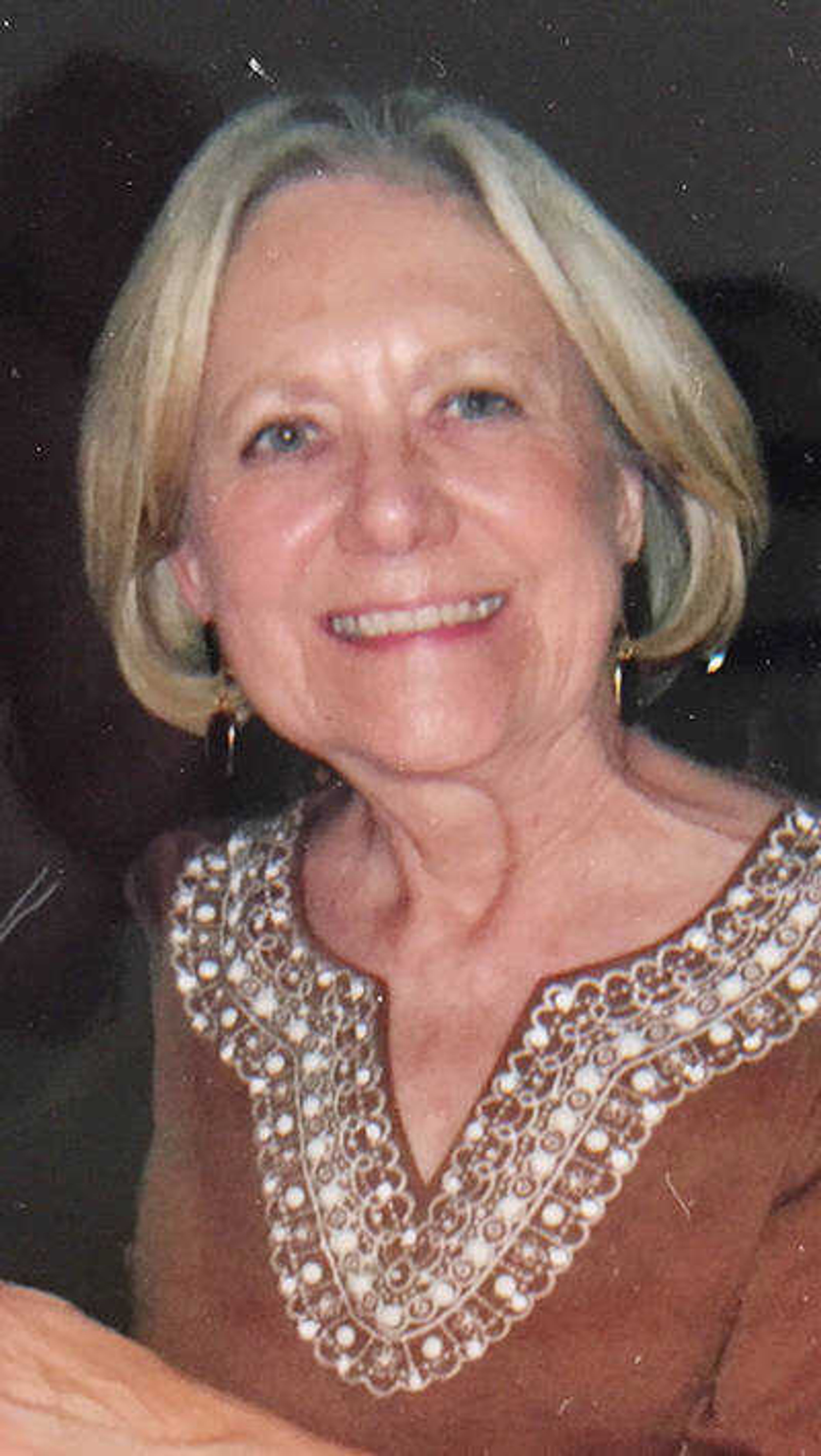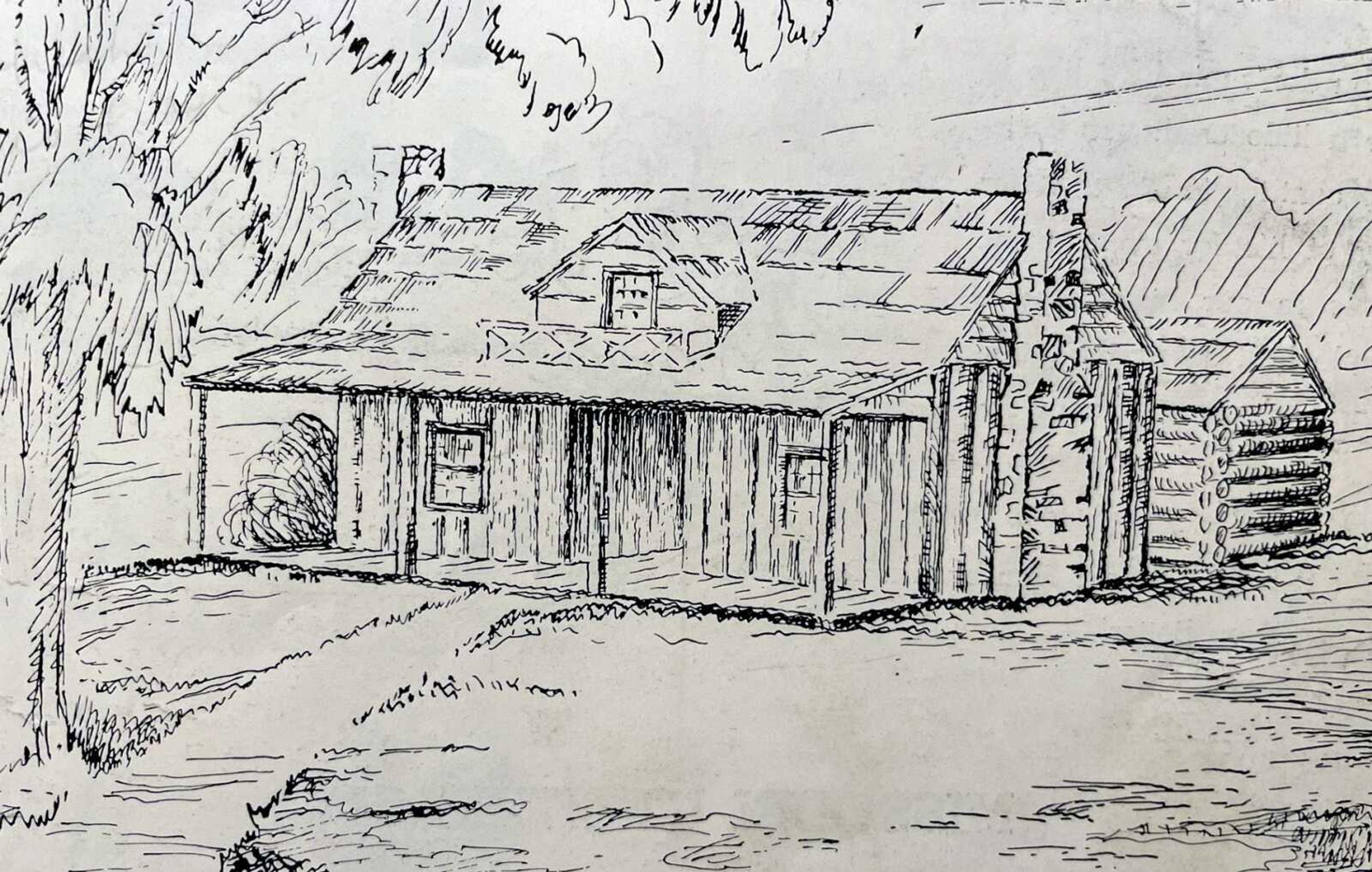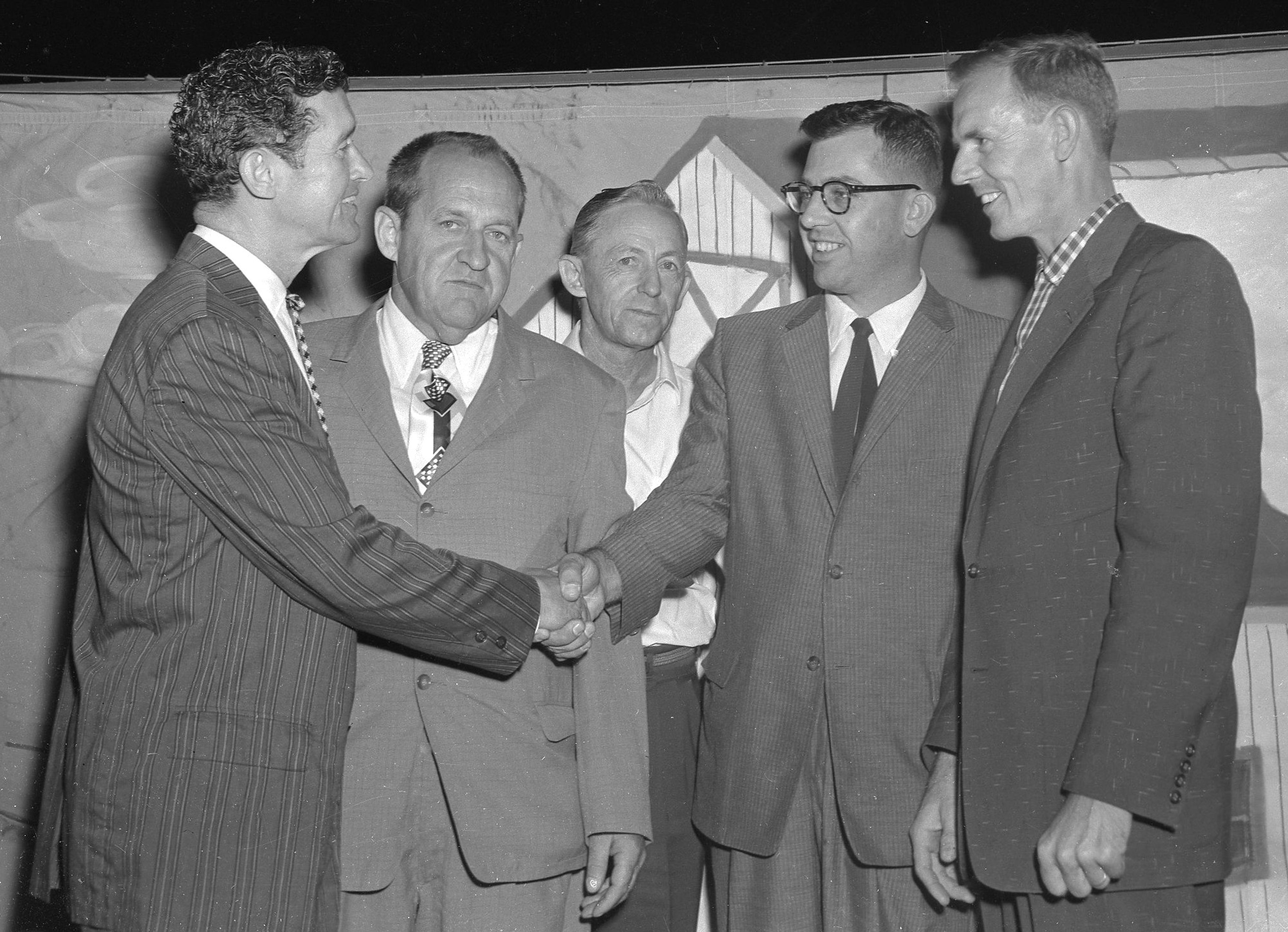After Louis and Charlotte Lorimier moved to Cape Girardeau in 1793 from the Ste. Genevieve area, they built their home near a spring overlooking the Mississippi River. It became known as the Red House.
Sarah Bollinger Daughtery, daughter of George Frederick Bollinger, remembered visiting their home and recalled the design of it. In 2003 a replica of the Red House was built near the original site and is today open to the public. She also had a memory of a significant elm tree. Among Louis Houck's papers, a drawing was found with her inscription: "This very large elm tree stood on the bank of the river in front of the Lorimier house. The Indians set up their wigwams in its shade and the squaws slung their papoose cradles in the branches."
As commandant at Cape Girardeau, Lorimier was the Spanish administrator for the influx of French, German and American immigrants moving into the district. Besides constructing flour mills, Lorimier acquired a license from the Spanish to operate a ferry.
After the U.S. purchased Louisiana from the French, Capt. Amos Stoddard, an emissary from President Thomas Jefferson, visited Lorimier to ask his assistance, knowing that Lorimier had not had good feelings about the Americans in the past. Lorimier agreed.
In early May 1804, Lewis and Clark, traveling to St. Louis for the Corps of Discovery, landed at Cape Girardeau on their keelboat. Lewis visited Lorimier as he was attending a horse race. It is from Merriweather Lewis' Journal we have the description of Lorimier: dark skin and eyes with a long braid that reached his knees. George Drouillard of their crew visited with his Uncle Lorimier before rejoining the party in St. Louis.
Louis and Charlotte donated land in Cape Girardeau for a school, five acres for the cemetery and property for the district government (Common Pleas Courthouse).
At the age of 50, Charlotte suddenly became ill. Without a doctor available, she was nursed by a friend, Rebecca Ramsey Giboney. After all remedies failed, Charlotte Lorimier died on March 23, 1808. Her body was placed on a river barge and taken to Lorimier's cemetery to a spot on the hill chosen by Lorimier.
Lorimier remarried for a short time in 1810 to Marie Bertheaume, daughter of his blacksmith and gunsmith of Apple Creek. They had one child who died at birth.
Maj. Louis Lorimier died on June 26, 1812, possibly from a bout with malaria. His was an impressive funeral with countless friends attending, including many tribes from the Cape Girardeau District, as when his wife had died.
As mentioned previously, Lorimier's Spanish land grants were extensive, including all of the Cape Girardeau village area.
Following the Louisiana Purchase, U.S. government commissioners wouldn't accept Lorimier's Spanish land grants or Cape Girardeau as the county seat; therefore, the county seat was moved to Jackson in 1814. Legalities prohibited the distribution of his land to his heirs until Missouri became a state in 1821.









